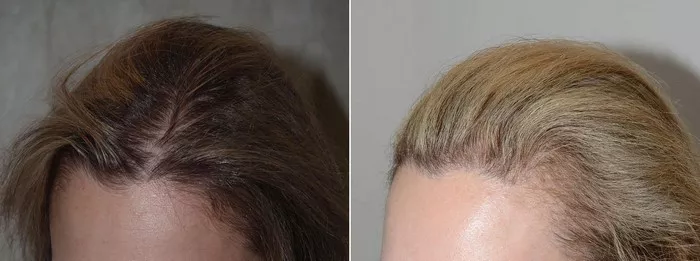Hair transplant surgery is a significant step for individuals seeking to restore their hairline and regain confidence in their appearance. Whether it’s a follicular unit extraction (FUE) or follicular unit transplantation (FUT) procedure, patients often have numerous questions regarding post-operative care and activities they can safely engage in during the recovery process. Among these queries, a common concern is whether wearing a hat after hair transplant surgery is advisable. In this comprehensive guide, we delve into the intricacies of wearing hats post-surgery, addressing concerns, dispelling myths, and offering practical advice for optimal recovery.
Understanding Hair Transplant Surgery
Before delving into the specifics of wearing hats post-surgery, it’s essential to grasp the fundamentals of hair transplant procedures. Both FUE and FUT techniques involve the relocation of hair follicles from donor areas to balding or thinning regions. While FUE involves individual extraction of follicular units, FUT entails the removal of a strip of scalp from the donor site. Regardless of the method used, the transplanted hair follicles require time to establish themselves in the recipient area and undergo a healing process.
The Importance of Post-Operative Care
Post-operative care plays a crucial role in ensuring the success of a hair transplant procedure. Patients are typically provided with detailed instructions by their surgeon, outlining guidelines for activities, hygiene, and medications during the recovery period. Compliance with these instructions is vital for promoting proper healing, minimizing complications, and achieving optimal results.
Factors to Consider When Wearing Hats After Hair Transplant Surgery
The decision to wear a hat after hair transplant surgery should be approached thoughtfully, taking into account various factors that may impact the healing process and outcome. Consider the following aspects:
1. Pressure on Transplanted Area: One of the primary concerns regarding wearing hats post-surgery is the potential for increased pressure on the transplanted area. Excessive pressure can disrupt the delicate grafts and impede their ability to establish blood supply and anchor securely in the recipient site.
2. Adequate Ventilation: Proper airflow to the scalp is essential for facilitating healing and preventing complications such as infection. When selecting a hat to wear after surgery, opt for styles that allow for adequate ventilation and avoid tight-fitting or restrictive options.
3. Material and Fabric: The material composition of the hat can also impact its suitability for post-transplant wear. Soft, breathable fabrics such as cotton or moisture-wicking materials are preferable over rough, abrasive textures that may irritate the scalp or disrupt healing.
4. Hygiene Considerations: Maintaining scalp hygiene is paramount following hair transplant surgery to prevent infection and promote healing. Ensure that hats worn post-surgery are clean and sanitized to minimize the risk of contamination.
5. Avoidance of Abrasion: Abrasive friction from hats can potentially dislodge grafts and compromise their viability. It’s advisable to refrain from wearing hats with rough interior surfaces or tight elastic bands that may rub against the scalp.
Timeline for Hat Wear After Hair Transplant Surgery
The timeline for when it’s safe to wear a hat after hair transplant surgery varies depending on individual healing progress and the specific recommendations of the surgeon. However, a general guideline can be outlined:
1. Immediate Post-Operative Period: In the immediate aftermath of surgery, it’s typically advised to avoid wearing hats to allow the scalp to breathe and minimize disruption to the grafts.
2. First Week to Ten Days: During the initial phase of recovery, it’s crucial to prioritize scalp hygiene and avoid anything that could potentially interfere with the healing process. Patients are usually instructed to refrain from wearing hats during this period to prevent unnecessary pressure on the grafts.
3. Subsequent Weeks: As the healing progresses and the scalp begins to recover, patients may gradually reintroduce the use of hats if necessary. However, it’s essential to remain mindful of factors such as pressure, ventilation, and material composition when selecting headwear.
4. Consultation with Surgeon: Ultimately, the timeline for resuming hat wear should be discussed with the surgeon during follow-up appointments. They can assess the individual’s progress, address any concerns, and provide personalized guidance based on their specific case.
Tips for Wearing Hats After Hair Transplant Surgery
For patients who wish to wear hats post-surgery, adhering to certain guidelines can help mitigate potential risks and ensure a smooth recovery process:
1. Choose Soft, Loose-Fitting Styles: Opt for hats that are soft, lightweight, and loose-fitting to minimize pressure on the scalp and reduce the risk of graft damage.
2. Avoid Tight Bands or Straps: Hats with tight elastic bands or straps should be avoided, as they can exert excessive pressure on the grafts and impede circulation.
3. Prioritize Cleanliness: Ensure that hats are kept clean and sanitized to prevent the introduction of bacteria or other contaminants to the healing scalp.
4. Monitor for Discomfort or Irritation: Pay attention to any signs of discomfort, irritation, or increased shedding while wearing hats, as these may indicate that the headwear is not suitable or that adjustments are needed.
5. Gradually Increase Wear Time: Start by wearing hats for short periods and gradually increase the duration as tolerated, paying attention to how the scalp responds.
6. Consider Alternatives: In some cases, alternatives to traditional hats, such as loose scarves or headwraps, may provide a more comfortable and suitable option for covering the scalp during the recovery period.
Conclusion
The decision to wear a hat after hair transplant surgery requires careful consideration of various factors, including pressure on the grafts, ventilation, material composition, and hygiene. While it’s generally advisable to avoid hats during the immediate post-operative period to allow for optimal healing, patients may gradually reintroduce headwear as instructed by their surgeon. By following guidelines for hat selection and usage and maintaining open communication with their healthcare provider, patients can support a successful recovery and achieve the desired outcomes from their hair transplant procedure.


